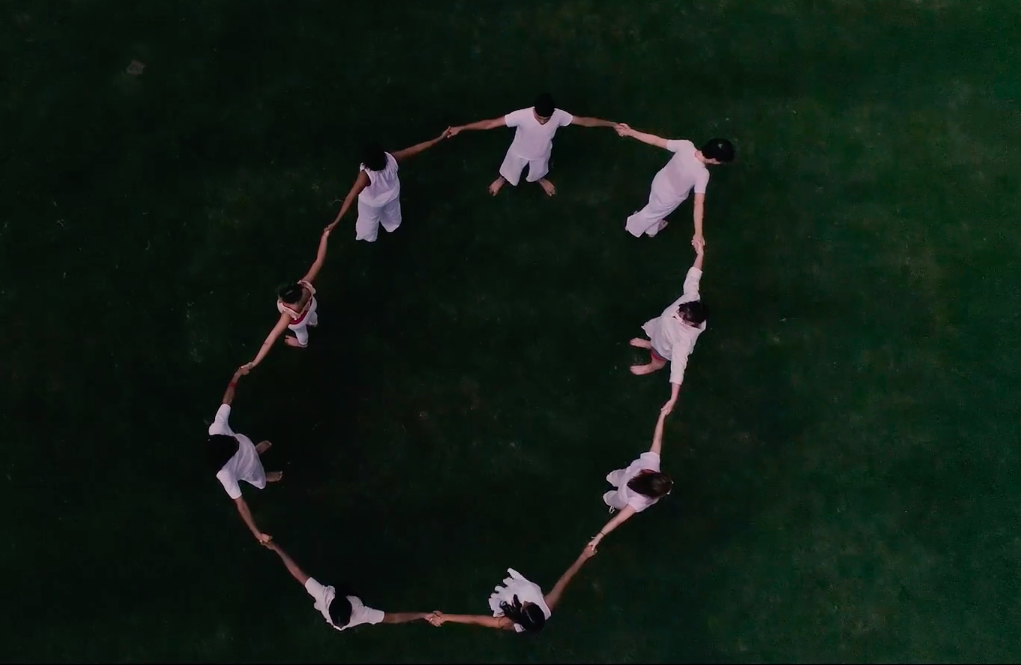
A still image of dancers in a circle, as seen from above, from a dance video by choreographer Killian Manning.

A still image of dancers in a circle, as seen from above, from a dance video by choreographer Killian Manning.
If the Libraries was expressed as a dance, what would that dance look like? This question was asked and answered for each academic unit at NC State through Data Perspectives in Motion, an artist residency project by choreographer Killian Manning with the Data Science Academy (DSA).
The project, in which Manning used interviews with faculty and staff across the university to create short dance works that show how data science connects across academic disciplines, recently held its premiere event in the Hill Library’s Visualization Studio. All 15 video vignettes shown in the studio are viewable on the project website.
“Killian interviewed me last spring for Data Perspectives in Motion, asking about how data science shows up in my work, my discipline, in my specific college, or interdisciplinarily,” says Mara Blake, Head of Data & Visualization Services at the Libraries. “She also asked about my hopes and dreams for what data science can accomplish. I shared with her my thoughts on the ideal position of the Libraries to engage with interdisciplinary data science work and my hopes for data science to advance the public good."
“After reviewing the transcripts of our interviews, I began creating movement that I thought would best illustrate the most salient points from each College,” Manning says. “The interdisciplinarity offered by the Libraries seemed to be the perfect fit for the Human Knot—it cannot be accomplished without cooperation.”
Manning’s choreography for the Libraries begins with a group of dancers in a human knot. Working together, they gradually unravel to form an open circle.
After Manning’s project was finished, Trevor Thornton, an Applications Developer at the Libraries, worked with Data Science Academy Executive Director Rachel Levy to figure out how best to present the dance videos in the immersive Visualization Studio.
“After working through a few ideas, we finally landed on a layout that just replicated each video around the room, with each instance separated by a graphic that provided context about the college or department represented in the video,” Thornton says. “With each subsequent video—15 in all—the position of the videos and graphics shifted, providing a subtly dynamic aspect to the presentation, which seemed appropriate to the content.”
The DSA published an article listing everyone involved with the project here.